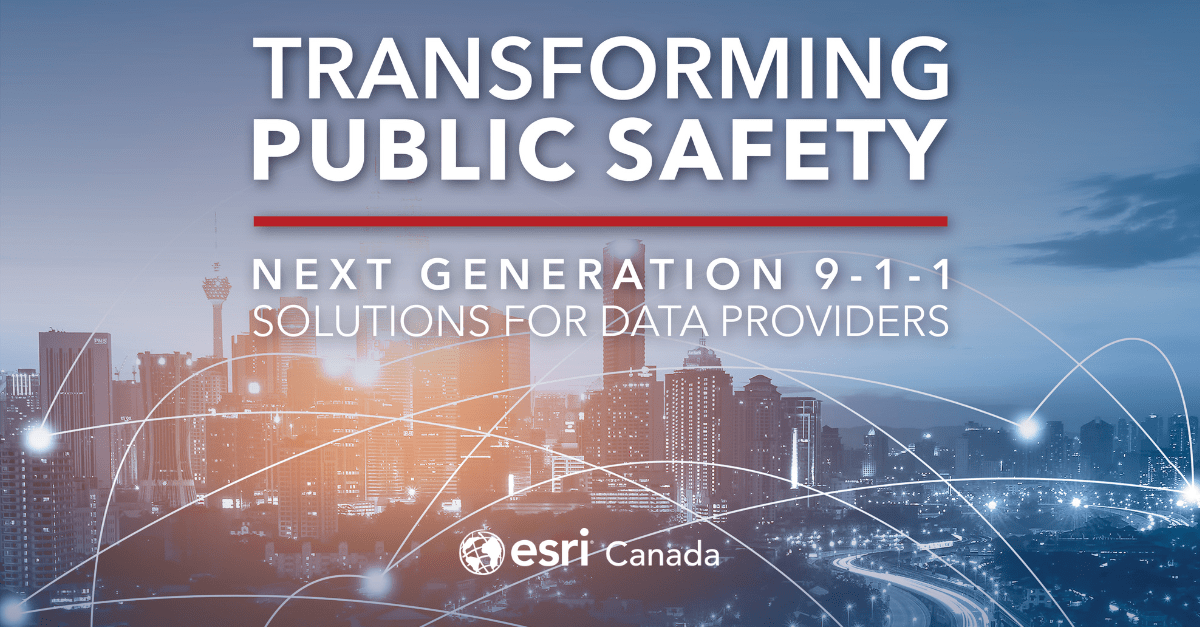NG9-1-1 GIS Data Readiness Assessment… Just Get It Done!
OK, I’m just going to get something out of the way before you read on… the intent of this blog is not to promote our Next Generation 9-1-1 (NG9-1-1) GIS data readiness assessment offering but is to inform and call you to action. The work outlined below simply needs to be done, so please just do it.
NG9-1-1 presents the Canadian GIS Community – and more specifically local governments -- both a challenge and an opportunity:
The Challenge is to ensure that your data is public safety grade and is ready and available for geodetic call routing – a significant benefit of NG9-1-1. Public safety grade GIS data is standards based and must be highly accurate, highly secure, highly available, complete, and up to date.
To be ready, you need to ensure the following:
- Key stakeholders are fully engaged. This should include Planning, Engineering, Police Services, Fire & EMS, Information Systems & Technology, GIS, Transportation & Public Works and Emergency Management.
- All 9-1-1 related data sets are identified, analyzed, and understood - where they are stored, how they are structured, and how they are being maintained.
- A thorough review of relevant documentation, such as policies, procedures, and day to day operations to manage the relevant GIS data.
- Documentation of your organization’s GIS technology infrastructure.
- Your data aligns with your neighbouring local governments and/or counties and regional districts.
- Complete understanding of 9-1-1 data and maintenance workflows within your organization, and an understanding of respective gaps between current state and expected NG9-1-1 standards.
Only when you work through the items listed above will you be able to develop detailed and actionable plans for your local government to meet its NG9-1-1 obligations – attaining public safety grade GIS.

The Opportunity is that your public safety grade GIS data will help ensure that your local government’s emergency response services can effectively adapt to and benefit from the advancements in emergency communication technology:
- Enhanced Public Safety: NG9-1-1 systems allow for improved location accuracy, multimedia communication, and routing of emergency calls. Ensuring your GIS data is up-to-date and accurate helps deliver faster, more precise responses to emergencies, potentially saving lives.
- Improved Emergency Response: NG9-1-1 systems enable dispatchers and responders to access critical information in real-time, such as building floor plans, hazardous materials data, and other details that can be vital during an emergency. A readiness assessment ensures your GIS data meets the needs of your responders.
- Reduced Response Times: Accurate and complete GIS data can significantly reduce response times by helping emergency services locate callers more precisely. This is especially critical in situations where seconds can make a difference.
- Interoperability: NG9-1-1 systems aim to be interoperable across jurisdictions and service providers. A readiness assessment can help you understand what is required to make your GIS data compatible with other systems, promoting efficient coordination in emergencies.
- Future-Proofing: Technology evolves rapidly, and NG9-1-1 is an evolving field. A readiness assessment can identify areas where your GIS data and systems need to be updated to remain compatible with future NG9-1-1 developments.
- Data Accuracy and Quality: A readiness assessment can reveal inconsistencies, inaccuracies, missing data and/or outdated information in your GIS data, allowing you to rectify these issues. High-quality data is essential for effective emergency response.
- Cost Savings: By identifying and addressing GIS data issues early, you can avoid costly rework and delays in NG9-1-1 implementation. It can also help allocate resources more efficiently.
- Community Confidence: Demonstrating a commitment to NG9-1-1 readiness and public safety can foster trust and confidence among your community members.
Attaining public safety grade GIS will not be easy – that’s why it’s a challenge. The readiness assessment is a proactive step to ensure that your city's emergency response infrastructure is prepared for the future, compliant with regulations, and capable of providing better public safety services. Your opportunity is the results achieved through your hard work. Through your public safety grade GIS you will reduce response times. You will improve the effectiveness of emergency services in your community. You will help save lives. That’s not a trivial thing, and it is something I take great pride in.
That all said, I urge you… Either leverage internal resources (providing it can be done in an unbiased way), engage with an outside consultant, or use our team of NG9-1-1 experts at Esri Canada… How you go about it doesn’t matter, just get it done.
So… you’re still reading this? You’ve just warmed my heart a little. It means you care about this. And if that’s the case, here’s a treat: We’ve just released our Next Generation 9-1-1 Solutions for Data Providers E-Book. It contains a lot of very useful information, including more details on the steps involved in performing a readiness assessment. Get it here… and thank you.

E-book: Transforming Public Safety: Next Generation 9-1-1 Solutions for Data Providers
For any questions about NG911, please email us at NG911@esri.ca